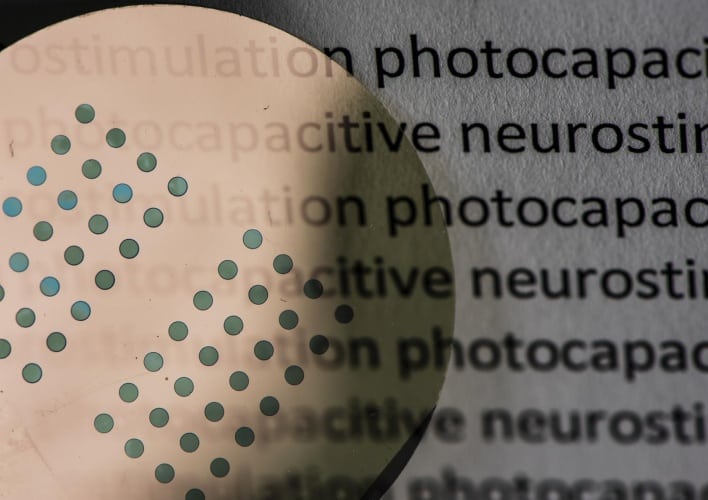
The thickness of both the organic islands and the underlying gold is more than one-hundred times thinner than a single neuron (Credit: Thor Balkhed)
Fabricated using widely-available organic pigments found in printing inks and cosmetics, the implant contains tiny pixels similar to a digital camera, but on a nanometric scale. Each pixel is about 100 times thinner than a single cell and has a diameter smaller than a human hair.
The photoactive material - a pigment of semi-conducting nanocrystals on a sheet of ultrathin gold – simulates the action of the retina by turning light into electrical signals. In humans, these signals are then transferred along the optic nerve to the brain’s visual cortex. It’s believed that the implant could restore sight for blind people whose retina cells are no longer sensitive to light. A collaboration between scientists working in Sweden, Israel, Italy and Austria, the study is published in Advanced Materials.
"We have optimised the photoactive film for near-infrared light, since biological tissues, such as bone, blood and skin, are most transparent at these wavelengths,” said research lead Eric Glowacki, an expert in organic nanocrystals at Sweden’s Linköping University. “This raises the possibility of other applications in humans in the future."
The Swedish team, specialists in nanomaterials and electronic devices, worked primarily to optimise the technology, while researchers at Tel Aviv University in Israel then carried out experiments in vision restoration. During testing, the implant was shown to induce direct optoelectronic stimulation of light‐insensitive retinas, demonstrating its potential to restore sight for the blind. According to the team, the response time of the photoactive material is paramount if light is to activate the nerve cells.
"The response time must be short if we are to gain control of the stimulation of nerve cells," said David Rand, a postdoctoral researcher at Tel Aviv University. "Here, the nerve cells are activated directly. We have shown that our device can be used to stimulate not only neurons in the brain but also neurons in non-functioning retinas."




Poll: Should the UK’s railways be renationalised?
All public service companies should be nationalised for many different reasons, particularly railways, not the least because the tax payer has already...